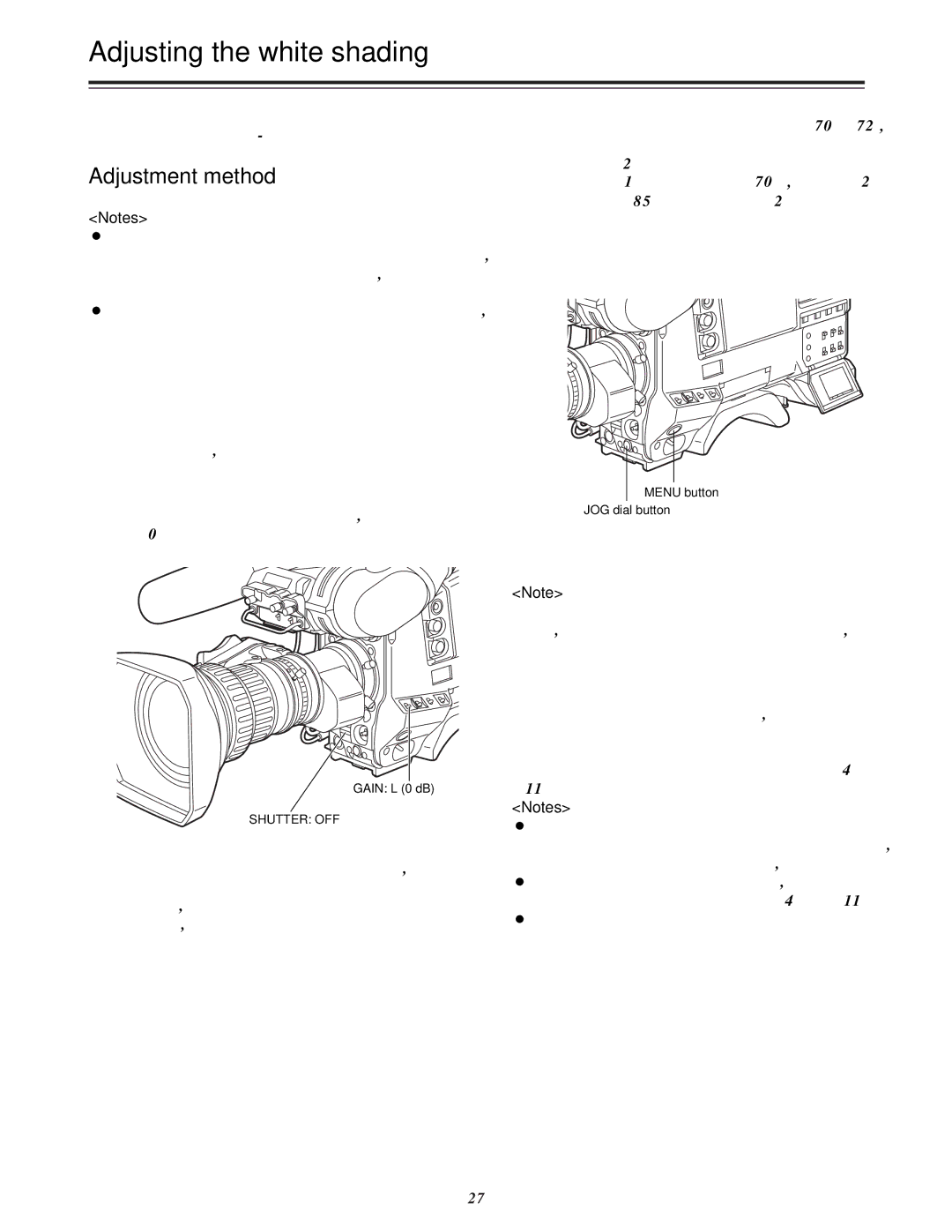
Adjusting the white shading
Follow the procedure outlined below when the white shading needs to be
Adjustment method
<Notes>
O The method below can be used for the white shading adjustments with most lenses. However, with some very special lenses, a different adjustment method may be necessary.
O Even when the white shading has been adjusted, tinting may occur in the vertical direction near the lens aperture open position. This is a phenomenon which is inherent to lenses and optical systems and is not indicative of malfunctioning.
1 Attach the lens to the camera.
At this stage, do not forget to connect the lens cable.
2 Set the electronic shutter to OFF, and set the gain to “L (0 dB).”
GAIN: L (0 dB)
SHUTTER: OFF
3 If the lens is provided with an extender, disengage the extender function.
Similarly, if the lens is provided with a ratio converter, disengage the ratio converter function.
4 1Perform the menu operations (pages 70 to 72), and display the “VF DISPLAY” screen of CAM MAIN MENU 2.
2Set ZEBRA1 DETECT to 70%, ZEBRA2 DETECT to 85% and ZEBRA2 to STOP.
(Default setting mode)
3Press the MENU button and close the menu
screen.
4Set the ZEBRA switch on the viewfinder to ON.
MENU button
JOG dial button
5 Shoot a sheet of white paper devoid of color irregularities.
<Note>
Since flicker tends to occur under fluorescent lights, mercury lamps and other such lights, use a source of light such as sunlight or a halogen lamp which does not tend to produce flicker.
6 Set the lens aperture to manual, and adjust the lens aperture in such a way that ZEBRA fills the whole screen.
Check that the lens aperture is between F/4 and F/11.
<Notes>
O Since unevenness in the lighting will make it impossible for ZEBRA to fill part of the screen, try adjusting the lighting position, etc.
O Try adjusting the lighting position, etc. also when
the lens aperture is not between F/4 and F/11.
O Always be sure to leave the electronic shutter at OFF.
27
